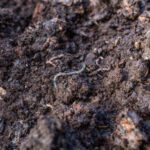Pruning shrubs is an essential task in maintaining their health and appearance. However, it can be a daunting task for many gardeners, as improper pruning can lead to damage and even death of the shrubs. In this article, we will explore the best practices and techniques to prune shrubs without causing harm.
Understanding the Basics of Pruning
Before diving into the techniques, it is important to understand the basics of pruning. Pruning is the act of removing certain parts of a plant to promote healthy growth and shape. It involves cutting away dead, damaged, or overgrown branches, as well as shaping the shrub to maintain its desired size and form.
Choosing the Right Tools
To prune shrubs effectively, it is crucial to have the right tools. Using sharp and clean pruning shears or loppers will ensure clean cuts without causing unnecessary damage. For smaller shrubs or delicate branches, handheld pruning shears are suitable, while loppers are better for thicker branches.
Identifying the Right Time
Timing is crucial when it comes to pruning shrubs. Generally, the best time to prune shrubs is during their dormant season, which is usually in late winter or early spring. Pruning during this time allows the shrubs to heal quickly and encourages new growth. However, there are exceptions, such as flowering shrubs, which should be pruned immediately after they finish blooming.
Pruning Techniques
1. Removing Dead and Damaged Branches
Start by removing any dead or damaged branches. These branches not only detract from the appearance of the shrub but can also hinder healthy growth. Make clean cuts just above the branch collar, which is the swollen area where the branch meets the trunk.
2. Thinning Out Overgrown Branches
If your shrub has become overgrown, thinning it out can help improve air circulation and sunlight penetration. Remove branches that are crossing or rubbing against each other. Additionally, remove any weak or spindly branches to promote stronger growth.
3. Shaping the Shrub
To maintain the desired shape of the shrub, selectively prune branches to create a balanced and symmetrical appearance. Start by stepping back and assessing the overall shape of the shrub. Then, make cuts just above outward-facing buds to encourage new growth in the desired direction.
Avoiding Common Mistakes
While pruning, it is important to avoid common mistakes that can harm the shrubs. One common mistake is “topping” the shrub, which involves cutting off the top portion of the shrub to reduce its height. This practice weakens the shrub and promotes rapid, weak growth.
Another mistake to avoid is excessive pruning. Removing too much foliage at once can stress the shrub and hinder its ability to recover. It is recommended to follow the one-third rule, which suggests removing no more than one-third of the shrub’s branches at a time.
Proper Disposal of Pruned Branches
After pruning, it is important to dispose of the pruned branches properly. Dead or diseased branches should be discarded to prevent the spread of pests or diseases. However, healthy branches can be shredded and used as mulch or added to compost piles.
In conclusion, pruning shrubs is an important task that can enhance their health and appearance if done correctly. By understanding the basics of pruning, using the right tools, and following proper techniques, you can prune your shrubs without causing damage. Remember to prune during the appropriate time, remove dead and damaged branches, thin out overgrown areas, and shape the shrub as desired. Avoid common mistakes such as topping or excessive pruning, and dispose of pruned branches properly. With these guidelines in mind, you can confidently prune your shrubs and enjoy a thriving garden.





